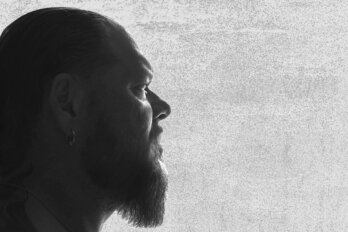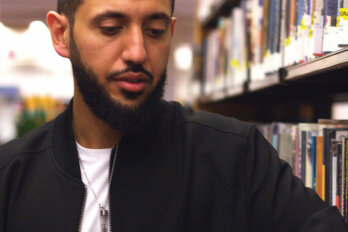After a co-worker sexually assaulted Roslyn Talusan in 2015, she filed a harassment complaint with her employer. Talusan told her employer she didn’t want them to call the police, but they did anyway, saying that it was their legal duty. When Talusan later spoke to the Crown attorney, she initially stressed that she didn’t necessarily need her attacker to be imprisoned. But she did want him to be held accountable and to understand the full impact of his assault. “I just wanted my attacker to know what he did was wrong,” she says.
Later, she decided she did want to go through with a trial. But it was too late. About eight months after management at Talusan’s workplace reported the crime, the Crown attorney’s office withdrew the charges. There was no doubt that Talusan was a credible witness, but the Crown attorney believed there wasn’t a reasonable prospect of conviction. Her attacker had no prior criminal record, and he had completed a diversionary course about STI transmission, which is an alternative to prosecution sometimes offered to the accused. Upon hearing the news, Talusan began to sob. “I wasn’t surprised, of course,” she later wrote in an essay published by Vice, “but the weight of the disappointment and knowing that he would never be held accountable to the fullest extent of the law was almost too much to bear.”
Today, Talusan wishes the prosecutor had given her more information about what her options were—ones that didn’t involve potential jail time for her attacker. Or that the Crown prosecutor, at the very least, had clarified what would happen during the criminal law process. Talusan had wanted to move forward in way that made her feel empowered and in control. Instead, the opposite happened.
Talusan’s experience is a common one. Survivors are almost always funnelled into a criminal-justice system that is still deeply flawed in its approach to handling sexual-assault cases. But alternatives—mechanisms in civil and administrative law as well as alternative-justice measures—do exist and can allow survivors to define “justice served” for themselves. What is lacking, however, is clear communication between authorities and survivors and details about what these other avenues actually are.
Sexual assault is the only violent crime in Canada that is not in decline, according to the Canadian Women’s Foundation. What’s more, only a small minority of survivors report their assault, according to a Statistics Canada study on self-reported sexual assault released in July 2017. In 2014, for instance, over 80 percent of sexual-assault incidents in Canada weren’t reported to police. And between 2009 and 2014, only 21 percent of reported sexual assaults led to completed court cases, according to Statistics Canada’s research. In comparison, the completion rate for physical-assault cases is nearly double, at 39 percent. The Globe and Mail’s Unfounded investigation reported earlier this year that Canadian police dismiss one in five cases as baseless—these dismissed cases represent hundreds of people who may have never have had their voices heard.
However, change is happening. Police services at every jurisdictional level in Canada decided to launch external and internal reviews of cases that were deemed unfounded as a direct result of Globe and Mail’s reporting. The London Police Service—which had one of the highest unfounded rates in Canada, according to the Globe—overhauled its entire classification system for sexual-assault crimes and promised a “victim-centred approach” to investigations, according to a London Free Press report. And the federal Liberals introduced a bill in June 2017 to amend the Criminal Code to strengthen rape shield provisions that outline what evidence can be introduced in sexual assault trials to prove whether there was consent.
But even those who are deemed to have enough evidence to pursue conviction still face a criminal-justice system that can be challenging to navigate. Criminal cases can take a long time to work their way through the system, if they do at all. As the Statistics Canada report shows, cases can be dropped for any number of reasons. It could be due to lack of evidence. It could be because the accused completed a diversionary program, like Talusan’s attacker did, and won’t face prosecution or have a criminal record. It could also be because the parties involved opted to pursue restorative justice.
The difficulties don’t end there. If the case does make it to court and the survivor gives their testimony, they will be asked to relive trauma and defend their account. To many survivors, this can feel like a secondary victimization and, as a result, can be a deterrent to going forward, says Farrah Khan, the coordinator of the Office of Sexual Violence Support and Education at Ryerson University.
It’s important to remember that there is a reason it is difficult to prove that a crime was committed: someone’s liberty is at stake. Supreme Court of Canada Chief Justice Beverley McLachlin noted in a recent speech in Toronto that no one has a right “to a particular verdict but only to a fair trial on the evidence.” But if justice is only found in a court of criminal law, then many survivors aren’t getting it. “We need to think outside the box,” says Brenda Cossman, a professor of law and the director of the Mark S. Bonham Centre for Sexual Diversity Studies at the University of Toronto, “because the box isn’t working.”
This has some asking what justice for sexual-assault survivors would look like outside of criminal law. One option for survivors is to pursue litigation in civil courts. Historically, this has been effective when used against institutions such as the Catholic Church. Beckett Personal Injury Lawyers in London, Ontario, made history in 2009 when it achieved a $1.75 million settlement (plus costs) from the Roman Catholic Diocese of London for Lou Ann Soontiens. At the time, it was the largest Canadian settlement for a survivor of sexual abuse. Soontiens told the CBC that the money would help put her life back together.
Chelsea Hishon is an associate lawyer at Beckett who represents survivors in civil lawsuits. Hishon says that in the civil process, the case is about what happened to the survivor and how it affected them. Most importantly, they call the shots. If at any time they decide they’ve had enough, Hishon can assess where she is in the litigation and if it’s time to start discussing settlement. She adds, though, that it isn’t as much of an uphill battle for the plaintiff in civil cases as it is in criminal trials. That’s because the burden of proof isn’t as high—it’s a balance of probabilities as opposed to “beyond a reasonable doubt”. In civil law, the survivor only needs to show that their case is what most probably happened. “They have the truth on their side,” says Hishon. “And that’s enough.”
Of course, for a plaintiff to get a settlement, the defendant actually has to have assets. For survivors who want monetary compensation—perhaps to help rebuild their lives—another option is criminal-injury compensation, such as the Criminal Injuries Compensation Board in Ontario or the Criminal Victim Assistance Program in British Columbia (there are similar programs across the country). Ontario created the CICB in 1971 to financially compensate the victims of violent crimes. The process starts with the claimant, who completes a lengthy application form for adjudicators to assess. The adjudicators can then, at their discretion, award financial damages to a maximum lump sum of $25,000. Sometimes, claimants will be required to attend a hearing, but if the claim can be assessed on written evidence alone, there’s no need for one.
“It is, for many women, a preferred process,” says Amanda Dale, the executive director of the Barbra Schlifer Commemorative Clinic, a specialized legal clinic in Toronto for women who have experienced violence. “The compensation that’s given really is very modest, but it is directed at a healing process.” The Barbra Schlifer is, in fact, currently one of the sites of a $2.8 million pilot project put in place by the Ontario government that provides vouchers for survivors to get up to four hours of free legal advice. It’s a model that empowers the survivor, giving them information about all their options to make an informed choice about what steps to take next.
Dale adds that the CICB is also important because it gives survivors a forum to have their harm heard and acknowledged in an official capacity. Plus, the compensation can assist with the practical realities of healing—trauma can interrupt a person’s life and cause financial loss. Compensation can help relieve that added stress. She also notes that Crown attorneys don’t represent survivors, they actually represent the state. “It is not the complainant’s case,” Dale says. “She is merely a witness to the crime, albeit a witness in the most direct and personal sense, because the crime was literally on her body.”
Survivors have the option to pursue both the criminal and civil justice at the same time. However, there are some factors to consider. Hishon says that defense counsel in a criminal case may try to use the civil case to call the plaintiff’s credibility into question by suggesting they are pursuing the lawsuit for reasons other than getting justice. On the other hand, if a criminal case results in a conviction, Hishon says that conviction can be used as evidence in the lawsuit. But survivors first need to know what options are available, and that’s still not happening with any consistency.
Nearly thirty years after Jane—a pseudonym, as her case is subject to a publication ban—was sexually assaulted, she decided to phone her local detective. She wanted to make sure that the man who abused her couldn’t hurt anyone else. Jane went through the criminal-justice system, the civil-justice system, and the CICB. “When I made the decision to come forward,” she says, “I decided I was going forward in every way possible knowing that the sentence may not be very much even if I was successful.”
In the end, Jane did reach a settlement in her civil case (she can’t discuss the financial details of it under its terms). The CICB also awarded her funds for pain and suffering, as well as funds for counselling. (Jane says that it gives her peace of mind to know that if she needs to pay for counselling, it won’t come out of her grocery bill.) And in the criminal system, her attacker was convicted on one charge of sexual assault and one charge of gross indecency in Ontario’s Superior Court of Justice.
Talusan did eventually find the CICB, while her criminal case was still ongoing, but only through her own research. “If Google didn’t exist, I wouldn’t have known,” says Talusan. A caseworker assigned to her on the criminal side later helped Talusan fill out the fifteen-page application, which she filed before the criminal case was dropped. At a later hearing, the CICB ruled in Talusan’s favour. She later wrote about her mixed feelings during the CICB process—testifying was “emotional torture,” but it was validating to have a legal authority hold the perpetrator accountable.
Neither Jane nor Talusan felt they had enough information about all of the options that were available to them and how those options worked. Part of the challenge, however, is the lingering perception that the criminal system is the only path to justice a survivor can pursue. When a survivor walks into Khan’s office at Ryerson looking for help, Khan starts by asking them what justice looks like for them. “It’s a question [we keep] coming back to as we work together,” she says. Khan explores legal options as well as options that fall under the broad alternative or restorative justice umbrellas with the survivor. She says that justice could take many forms, including counselling, the perpetrator meeting with the survivor and their community, even the survivor reading a letter to the perpetrator, explaining why what they did was harmful.
Cossman, the law professor, is also intrigued by the potential for provincial and federal human rights tribunals. Such forums hear claims of discrimination and harassment under grounds enumerated in their respective human rights codes. The tribunal adjudicators can mete out remedies that include restitution, education, and workplace training. And much like the civil system, the burden of proof is on a balance of probabilities. “If you look at the set of remedies a human rights tribunal can impose, it’s a very different set of remedies than we think of when somebody goes to jail,” she says.
The crucial thing to remember is that all survivors have different needs and will have differing feelings about their experience. That means we also cannot give up on the criminal justice system. “We need to continue to push and reform that system or we have a more serious problem with impunity,” says Dale at the Barbra Schlifer clinic. “There are some women who want a rapist to be convicted; there are some rapists who should be behind bars. So giving up on the system is not the answer.”
For Jane, going through the criminal system did bring some sense of closure. “What I think people forget is that victims relive it every single solitary day,” she says. “The only difference is when we relive it, we have no closure at the end. At least when you are in a court process, especially the criminal-court process, there is a conclusion to it. It may or may not be the conclusion you want, but there is a conclusion.”
Talusan does not feel justice has been served. She still works for the same employer, but she is in a different department. The man who abused her still has his job—she had to continue working in proximity to him until she moved departments. For now, she is trying to take her claim through a human rights tribunal, but she was told she has to exhaust all the options available at her workplace before she can file her claim. “It’s been almost two-and-a-half years since the assault, and nothing has really happened,” she says. “As much as it’s worth it for me to hold him accountable and drag this out as long as I can, at the same time, I am tired and I don’t want to deal with this anymore.”




